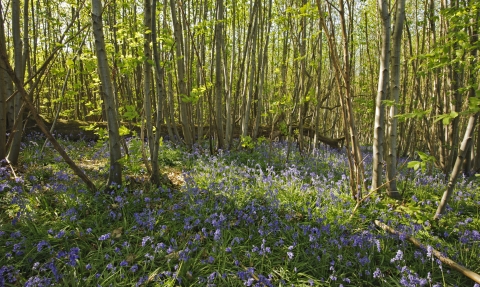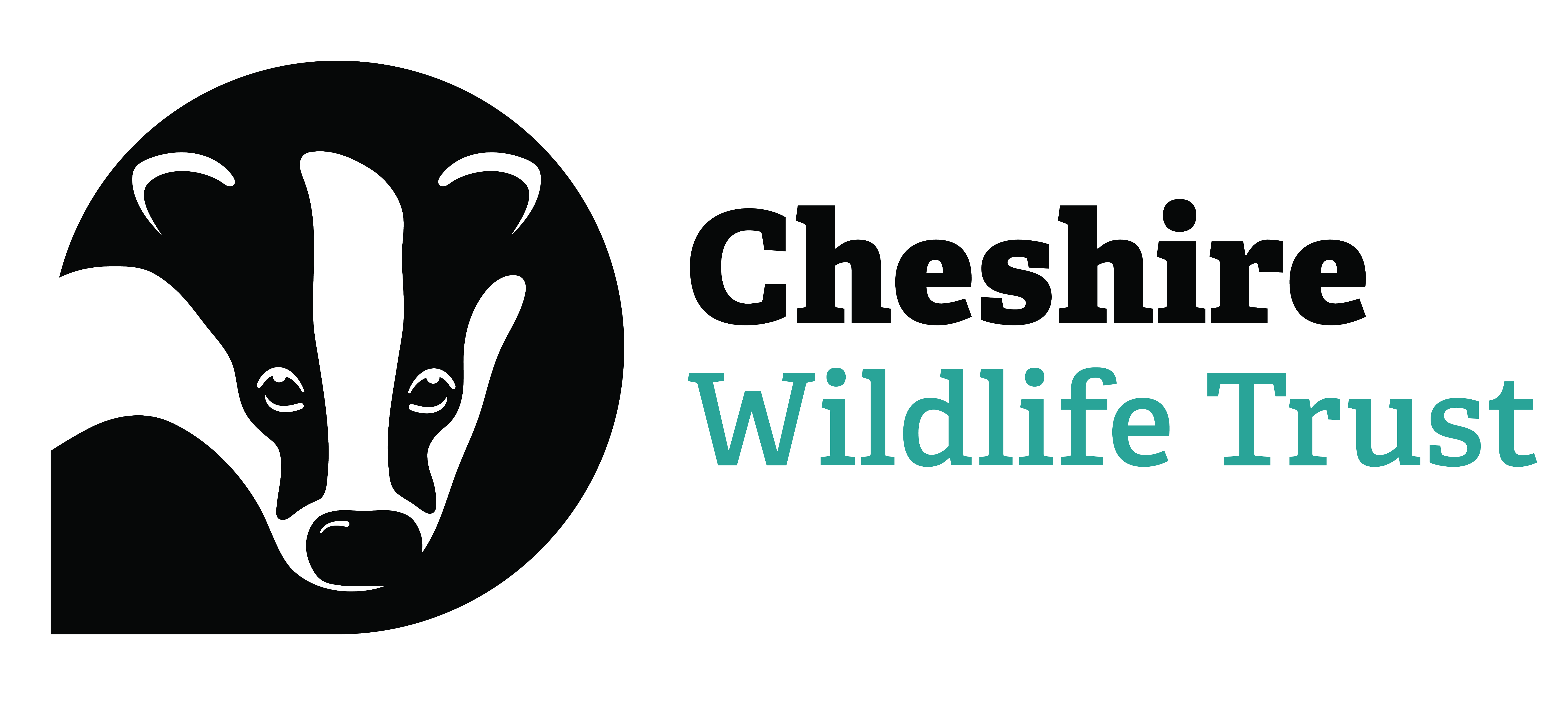
Houses c. Ben Hall/2020VISION
Planning and development advice
New developments can create both threats and opportunities for local wildlife. The planning system exists to control development, ensuring the right sort of positive/favourable development occurs in the right location while preventing inappropriate planning.
Cheshire Wildlife Trust works to increase local protections for wildlife in policy and legislation, advocate for wildlife when threatened by development, and compile data, surveys and evidence to inform conservation decisions.
Our response to the Cheshire and Warrington devolution consultation
The new Cheshire and Warrington Combined Authority has the potential to support nature if shows leadership with our Local Nature Recovery Strategy. There must be a firm commitment to addressing nature-loss to ensure a future where wildlife thrives. It is vital the combined authority supports partnerships and coordinates the action that creates, restores and protects habitats across Cheshire, as mentioned in the English Devolution White Paper.
Planning for wildlife
We give wildlife a voice by:
- working with Local Planning Authorities (LPAs) and developers to help ensure development gives more to nature than it takes away. We object to developments that have an unacceptable impact on wildlife.
- influencing local plans and local planning policies to ensure wildlife is appropriately considered and, where necessary, protected in the planning system
- coordinating with Local Planning Authorities to inform their assessments
- liaising with developers to ensure that Biodiversity Net Gain (BNG) is implemented correctly and in a way that benefits nature
- writing comprehensive reports to inform the biodiversity chapter of Neighbourhood Plans
- coordinating our Local Wildlife System and providing advice and support to landowners
Cheshire Wildlife Trust handles planning applications according to the individual circumstances in each case; proposals are considered as a whole, taking into account both short and long term effects on biodiversity and the landscape. Due to capacity limitations, we must prioritise applications which are most damaging and impact priority habitats, priority species and our Local Wildlife Sites.
However, you can get involved! We encourage you to advocate for wildlife by responding to planning applications, engaging in public consultations and campaigning. Below are some fact sheets and guidance to help you understand the planning process.
For further information please contact our planning and advocacy officer at planning@cheshirewt.org.uk.
If you are concerned about a development in your area and its impact on wildlife, then take a look at our advice sheets below:
Engaging with the planning system
Learn more about planning and wildlife
The UK planning system
Planning ensures that development happens in the right place at the right time in a way that benefits the community, the economy and the environment. It is set out in legislation and policy at a national and local level and carried out by Local Planning Authorities (LPAs). Most building, engineering and infrastructure works must be approved by the LPA or the Planning Inspectorate (PINS) following a public consultation period and a thorough review of the proposals.
Plain English guide to the planning system - GOV.UK
For more details see: Engaging with the planning system (pdf)
Policy and Legislation
National policy and legislation
- The planning system is founded in national policy and legislation which set out how planning should be undertaken across the country. Legislation such as the Town and Country Planning Act (1990) brings together laws that dictate how land is used and how urban and rural development happens. The National Planning Policy Framework (NPPF) advises Local Planning Authorities (LPA) and developers on what they can and cannot do, provides guidance on what makes a development ‘sustainable’ and informs the preparation of the Local Plan by the LPAs.
Local plans and Neighbourhood plans
- Local Plans and Neighbourhood Plans are at the heart of the planning system at the local level. Local Plans are prepared by the LPA and use local knowledge (including input from councils, local residents, various stakeholders and organisations) to determine where and what kind of development should happen. The policies within them are used by the LPA to inform their decisions on planning applications, though a variety of considerations are taken into account. Among these are the Neighbourhood Plan, an optional set of policies prepared by the parish or town council which incorporate community knowledge and preferences.
How does this relate to wildlife?
- Wildlife and biodiversity are considered and protected at every level of the planning system, though with varying strength depending on policy wording. Local policy such as the Local Plan and other Supplementary Planning Documents set out how and when wildlife is to be protected from developments. National legislation is crucial as well, such as The Wildlife and Countryside Act 1981 which protects wild birds and other important/endangered species, as well as The Environment Act 2021 which mandates Biodiversity Net Gain and Local Nature Recovery Strategies.
For more details see: Protected species and habitats and the law (pdf)
Biodiversity Net Gain
Biodiversity Net Gain is a framework designed to help fund nature’s recovery through the planning system.
Developments are required to provide a 10% net gain to biodiversity by measuring how much biodiversity will be lost to the development and providing gains either onsite or offsite of the development. For example, this can be through the creation of a new meadow within the development, the enhancement of a nearby woodland or the funding of a new nature reserve in the county. How well it works to deliver gains for nature depends on its implementation by LPAs and developers, which is why part of our job is to advocate for best practice standards and to hold to account those attempting to short-change nature.
Our nature recovery team and our nature-based solutions team also use funding from BNG to deliver our conservation work in Cheshire.
Understanding biodiversity net gain - GOV.UK
For more details see: Understanding Biodiversity Net-Gain (pdf)
If you think a developer is in breach of planning regulations in a way that threatens wildlife, contact Natural England (Crewe offices 0300 060 2922).
Major developments in our region
FAQs
What happens to protected species when they are threatened with development?
Construction works require licences from Natural England if they impact European protected species (beavers, bats, otters etc) and their habitats. Impacts to Great Crested Newts can be addressed through ‘District Level Licensing’ which aims to create four new GCN ponds for every one that is impacted. Other schemes apply to other species.
Can I read CWT’s comments on a planning application?
Once submitted, our comments are uploaded to the planning portal and can be found in the ‘documents’ section of the relevant application’s page.
Why hasn’t CWT commented on this application?
Unfortunately, we are a small team and have limited capacity and resources, so we must prioritise our involvement and engagement. Being a wildlife charity, we only comment on ecological issues, leaving the rest to those with the relevant expertise. Unless there is considerable public interest, we mainly comment on large projects (housing development, infrastructure), developments that will impact our Local Wildlife Sites or priority habitats, or ones that will heavily impact rare, threatened or protected species.
What can I do if I observe wildlife being harmed during construction works?
We do not have any enforcement power, so please reach out to the relevant local council, which will have a ‘Planning Enforcement’ page on their website.
To report larger-scale damage and environmental incidents, contact the Environment Agency.
Where can I send wildlife observations and species records?
The local environmental records centre for Cheshire is called Record; they compile observations (with as many details as possible) into their database. In addition to contributing to citizen science, by sending in your observations you also make it more likely for developers to have to take those species into account. It also makes it easier for us to object.
What can I contact you about?
If there is a large development which will impact priority species or priority habitats (see 'Protected species and habitats and the law' pdf), contact us at planning@cheshirewt.org.uk with as many details as possible. If it is related to a planning application, please provide the application number (to be found on the relevant LPAs planning portal), detailed location, species records and any other ecological information. We cannot guarantee an objection against the development, though we try to look into all applications that are sent our way.

Wildlife site c. Terry Whittaker/2020VISION



